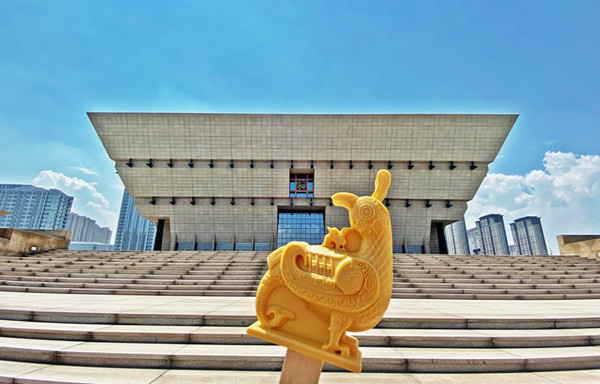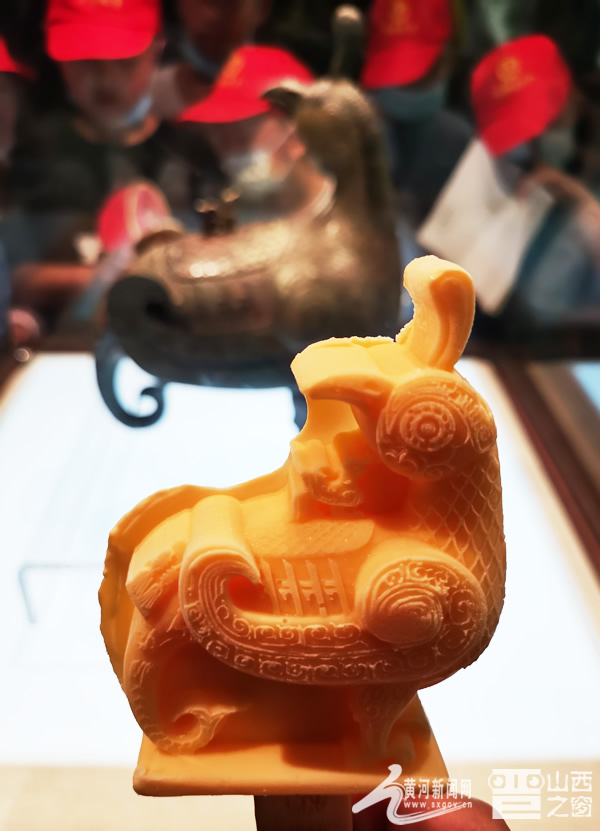
Ice pops shaped like bird-shaped zun are now a popular treat in Taiyuan. [Photo/sxgov.cn]
Ice pops shaped like bird-shaped zun (wine vessels) have now become hot favorites with the public in Taiyuan, capital of North China's Shanxi province, the byproduct of the local museum's latest moves to give its visitors a kick with quirky products.
The cultural creative department of the Shanxi Museum began developing the creative cultural ice pops during this year's Spring Festival.
After much debate, the bird-shaped zun – an artifact unearthed in the tomb of the Marquis of Jin State from the Western Zhou Dynasty (c.11th century-771 BC), in Linfen city – was selected as the inspiration for the ice pop image.
It was chosen out of over 520,000 cultural relics housed in the museum, because it was deemed a typical symbol that can represent the culture of Shanxi and is familiar to people.
The R&D team of the museum's cultural creative department chose to highlight the charms and patterns of the cultural relic in a scaled-down replica and then transfer the motif to the design of the ice pop.

An ice pop shaped like bird-shaped zun is pictured in front of the real thing at the Shanxi Museum. [Photo/sxgov.cn]
The sweet frozen treat comes in the flavor of golden mango, reflecting the hue of the new bronzes in ancient China which were golden, according to Lu Jing, from the department.
It's not the first time such a quirky product has been developed from the province's rich cultural roots. In fact, since 2013 Shanxi Museum has developed some 1,000 creative cultural products, allowing visitors to get an insight into each cultural relics' history and value, as well as the museum's wider collection.
Among these creations were some 30 types based on the bird-shaped wine vessel, which have also proved popular with the public.
Moving forward, the museum is considering whether to roll out bird-like wine vessel-shaped ice cream with the flavor of matcha, representing the green appearance of the bronze ware that has been oxidized over thousands of years.
